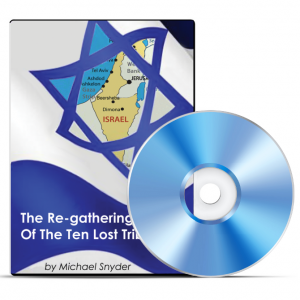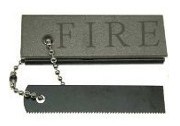|
|
 Guest Post Lee Flynn Guest Post Lee Flynn
Fulfilling our basic needs of warmth, protection and food in an apocalyptic situation or after natural disaster can be challenge, but it doesn’t have to be if you prepare properly ahead of time. Spending some time and money investing in quality food and supplies will take you a long way in desperate times. The last thing you want to do is be stuck without the basic necessities in a bad situation.
Creating Warmth
In a natural disaster, you might be facing snow, wind, rain, or freezing temperatures. Investing in a subzero proof sleeping bag for each person in your family will ensure warmth no matter how cold it gets; and protect them from frostbite and hypothermia. Fleece blankets for during the day time are also good to keep in your kit, since shelters aren’t always the warmest.
Thermal under armor, ski glasses, waterproof boots, waterproof gloves, lined coats and hats should also be in your kit for each person to keep everyone dry and warm. Thin gloves and beanies allow water to seep in and chill the body down leading to hypothermia. Keeping your health in a disaster is of up-most importance, so don’t skimp (Read more....) […]
 Guest Post – Danielle M. Guest Post – Danielle M.
Flooding, hurricanes, tornadoes, wildfires and earthquakes can strike at any time and often with little warning. In 2012, nearly 125 million people worldwide were victims of natural disasters, and in the United States, weather-related disasters caused about $157 million in damages.
The time to prepare for a disaster is not before or just after it hits – the best time to prepare is now. Making your own emergency survival kit and having a plan in place could save your life when disaster strikes. Take a look at these tips for how to make your own DIY emergency kit:
Food: For an emergency survival kit, you should have at least a three-day supply of non-perishable food items for each member of your household, including pets. Canned foods, pre-packaged and dry foods like rice and beans are the easiest to store and pack. You can easily store dry rice and beans in mason jars, empty milk jugs and empty 2-liter soda bottles. Choose foods that are high in calories and nutrition. Peanut butter, nuts, tuna, soup, crackers, protein bars and trail mix are easy to pack and offer important nutrients.
Water: For survival situations, (Read more....) […]
 Guest Post- Danielle M. Guest Post- Danielle M.
The Colorado flooding earlier this year washed away highways, interstates and even small towns. In its wake, it left behind another lesson on disaster clean up and preparedness.
The storm
Heavy rainfall hit on September 9, and didn’t let up until Sept. 13. The storm front was trapped against the Rockies, which meant four days of heavy rain. Rainfall totals equaled 14.62 inches — about two-thirds of the annual rainfall for the area.
The aftermath
Nine people died in the flooding, and many, many more lost their homes. Eighteen towns, including Denver, were hit by flash flooding. Smaller towns high in the mountains were hit particularly hard, and assistance was a long time coming thanks to roads being completely washed out. In many places, only bedrock is left where asphalt used to be — a state that could remain until 2015.
Left without options for getting down the mountain, Colorado flood survivors can (Read more....) […]
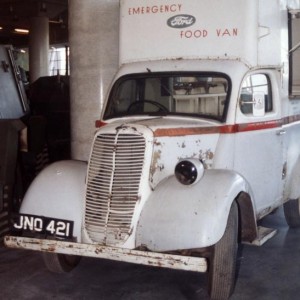 by Stacey Thompson by Stacey Thompson
Typhoons, earthquakes, floods, and a host of man-made disasters are a regular thing nowadays. Our lack of empathy for the environment, as well as each other, has facilitated an increasingly dangerous world for us.
In many of these situations, there really is no recourse but to evacuate from the affected area. For those who are fortunate enough to have their own home, and have enough space in their garage or yard to accommodate another vehicle, my suggestion is to have an emergency vehicle that is equipped to handle emergencies of various kinds.
This vehicle need not be expensive. A second-hand van or station wagon with the proper accessories and add-ons will more than do. A neighborhood association can pitch in to maintain and add the necessary upgrades to the van; services like American Van Equipment can provide the proper parts and installation at affordable rates.
Top Rack & Ladder
This is probably the most basic, and at the same time, the most useful feature you can (Read more....) […]
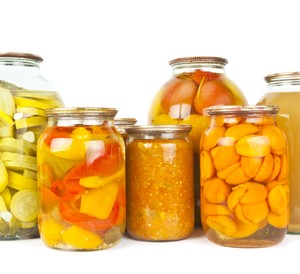 Superstorm Sandy was a stark reminder of potential climate change and a new normal when it comes to natural disasters. Some people in the Northeast were without power for weeks following the storm, while others had to wait hours in line for a couple gallons of gasoline. Every household should have a survival kit containing the essentials needed to weather the storm until normalcy can be restored. The cost to compile the kit is nothing compared to what life will be like without it in the aftermath of disaster. Superstorm Sandy was a stark reminder of potential climate change and a new normal when it comes to natural disasters. Some people in the Northeast were without power for weeks following the storm, while others had to wait hours in line for a couple gallons of gasoline. Every household should have a survival kit containing the essentials needed to weather the storm until normalcy can be restored. The cost to compile the kit is nothing compared to what life will be like without it in the aftermath of disaster.
Water
Human beings can only survive a maximum of five days without water, and that is under ideal conditions. Floods, hurricanes and earthquakes can knock out municipal water sources for weeks at a time. Whether in the basement, attic or spare room, a few gallons of water should be stored in every home, especially when there are children. Some water may still flow through the pipes when the faucet is turned on, but it could be contaminated with bacteria. Purification tablets can be (Read more....) […]
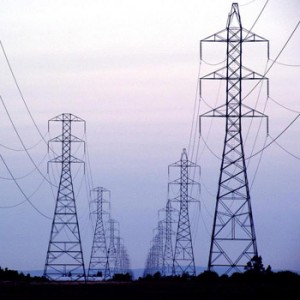 Recently, large parts of the North East were without power for a long period of time due to storm damage. In my life, I have experienced a couple of weeks with no electricity after a storm and I know what it is like to suffer through that. However, you can make it livable and even enjoyable if you just change your mindset. Here are some things you need to remember: Recently, large parts of the North East were without power for a long period of time due to storm damage. In my life, I have experienced a couple of weeks with no electricity after a storm and I know what it is like to suffer through that. However, you can make it livable and even enjoyable if you just change your mindset. Here are some things you need to remember:
People lived before electricity. I know it seems like a foreign concept to you, but people did actually survive before electricity was invented. In fact, they probably lived in your town before electricity was installed. That means that you can survive and even thrive without electricity. All you have to do is use a little common sense.
(Picture Credit, The Energy Collective)
Cook with fire. You should have propane or charcoal or some other form of fire cooking ready to go in case of emergency. I know that some of you have a gas stove… but even that could go out during a disaster. If you are cooking, make the most of your heat (Read more....) […]
 In the aftermath of a disaster, it’s only natural that we all want to lend a hand. However, it’s not always easy to know how to accomplish this goal. With a few simple tips in mind, everyone can discover how they can assist the victims of any type of catastrophe. In the aftermath of a disaster, it’s only natural that we all want to lend a hand. However, it’s not always easy to know how to accomplish this goal. With a few simple tips in mind, everyone can discover how they can assist the victims of any type of catastrophe.
1. Give money. This can be the simplest and most effective way to assist in the aftermath of disaster. However, always donate with care. It is a disheartening fact that many fraudulent “charities” spring up after disasters. Donate only to charities you know and trust. You’ll rest easier knowing your money is going where it is needed most.
2. Donate items. After a disaster, the victims need many basic necessities. Food, water, laundry detergent, toothbrushes and other everyday items are in short supply. Although it’s easy to imagine what might be needed, resist the temptation to ship anything that is unsolicited. Instead, do some research about what is required by the victims. Many relief efforts are hindered by the constant arrival of unnecessary donations. Find out which organizations are helping out in the disaster area. Visit their websites or call their head offices to find out what’s really needed (Read more....) […]
|
|









